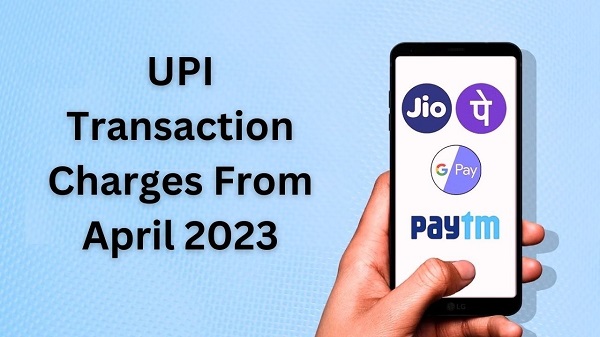In a world where digital payments have become the norm, the Unified Payments Interface (UPI) has emerged as a beacon of hope for millions of Indians. With the ability to transfer money at the tap of a button, UPI has transformed the way we handle financial transactions. However, the landscape of UPI is set to change as the National Payments Corporation of India (NPCI) has announced the introduction of a fee on UPI transactions starting from April 2023. The news of this fee has sent shockwaves through the digital payments industry, and users are left wondering who will have to pay these charges and how it will affect their experience with UPI. In this blog post, we will explore the charges applicable to UPI from April 2023 and shed light on who will be required to pay them.
Unified Payments Interface (UPI) has emerged as a popular mode of digital payment in India over the last few years, with its user base growing rapidly. However, the National Payments Corporation of India (NPCI), the governing body of UPI, recently announced that from April 2023, merchants will have to pay a charge for using UPI services. This announcement has led to various debates and discussions about the impact of this decision on businesses and consumers.
So, what are the charges that will be applicable from April 2023?
As per the NPCI, merchants who receive payments through UPI will be charged a fee of 1.1% on transactions above Rs. 2000. This fee will be applicable on a per-transaction basis and will be capped at a maximum of Rs. 2,000 or above per transaction. The NPCI has stated that this fee will help fund the infrastructure and maintenance of the UPI system.
Apart from UPI, merchants who use Prepaid Payment Instruments (PPI) will also have to pay charges starting from April 2023. PPIs are digital wallets that allow users to make transactions using a mobile app. Merchants who use PPIs must pay charges to the PPI issuer or the payment system provider for accepting payments from their customers. The charges are usually a percentage of the transaction value and vary depending on the provider.
Now, the question arises, why do merchants have to pay this charge?
To understand this, we need to look at the infrastructure and technology behind the UPI system. The UPI system is a complex network of banks, payment service providers, and technology providers, all working together to provide a seamless payment experience. The NPCI is responsible for the governance and regulation of this system, and it invests heavily in maintaining and upgrading the UPI infrastructure. This includes developing new features, upgrading security protocols, and expanding the network to ensure that the system can handle the growing volume of transactions.
Merchants who use the UPI system benefit from this infrastructure and technology, as it allows them to receive payments from customers easily and securely. However, this infrastructure comes at a cost, and the NPCI has been bearing this cost until now. With the new charges, the NPCI is shifting this cost to the merchants who use the system. This is a common practice in the payment industry, where merchants are charged for the use of payment services and infrastructure.
While the announcement of charges on UPI transactions may come as a surprise to some, it is important to note that this is not a new concept. Other payment systems, such as credit card and debit card transactions, also involve charges for merchants. These charges are usually a percentage of the transaction value and are used to fund the infrastructure and technology behind these payment systems.
What Are the Benefits of Using UPI and PPI Despite the Introduction of Charges?
The introduction of charges on UPI transactions and PPI usage from April 2023 has raised concerns among some merchants and customers. However, despite the charges, there are several benefits to using UPI and PPIs that make them worthwhile for businesses and individuals. Here are some of the key benefits of using UPI and PPIs despite the introduction of charges:
- Fast and Convenient Transactions: UPI and PPIs offer a fast and convenient way to make transactions. Transactions are processed in real-time, which means that users do not have to wait for long periods to receive or send money. This is especially beneficial for businesses that need to process a high volume of transactions quickly.
- Secure Transactions: UPI and PPIs use advanced security measures to ensure that transactions are safe and secure. These measures include two-factor authentication, encryption, and other security features that protect users’ personal and financial information.
- Easy Integration: UPI and PPIs are easy to integrate into existing business operations. Merchants can easily integrate UPI and PPI payments into their websites or mobile apps, making it easy for customers to make payments.
- Low Transaction Costs: Despite the introduction of charges, UPI and PPI transactions still cost less than traditional payment methods. This is because UPI and PPIs are digital payment methods, which means that they do not require the same infrastructure as cash or card payments.
- Accessible to All: UPI and PPIs are accessible to all users, regardless of their financial status or location. This is especially beneficial for individuals and businesses in rural areas that may not have access to traditional banking services.


